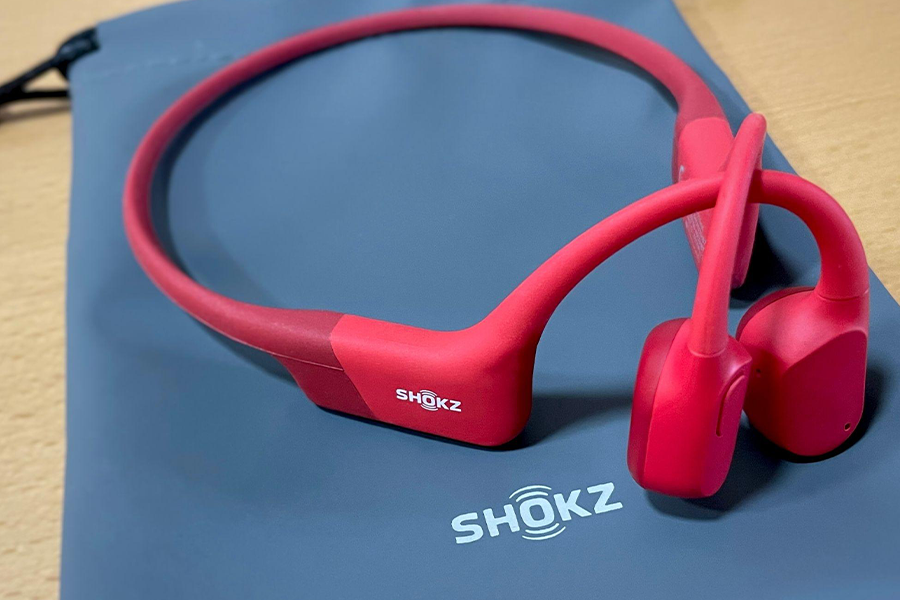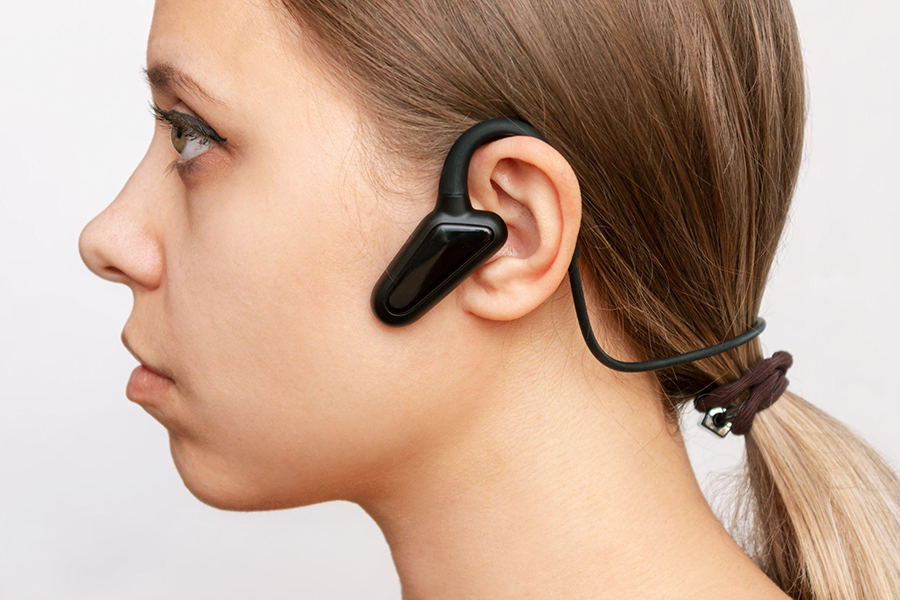Picking the appropriate open-ear headphones can be difficult in today’s market, which is more saturated than ever. Read the article to find out what shoppers are looking for. We’ve created a guide to help you save time and learn everything there is to know about bone-conduction headphones.
Table of Contents
Overview of the open-ear headphone market
What are open-ear headphones?
How does bone-conduction technology work?
Benefits of open-ear headphones
What to look for when buying earphones
Frequently Asked Questions
Music on the go
Overview of the open-ear headphone market
The global bone-conduction earphone market was valued at US $224.3 million in 2020 and is projected to increase at a compound annual growth rate (CAGR) of 20.4% to reach US $985.3 million by 2028. The open-ear headphones convert sounds by transferring vibrations via the bones rather than the eardrums.
They have several attractive features, such as extended battery life and water resistance. Because these earbuds are located outside the ear, they are ideal for those with hearing impairments or those who use hearing aids. This efficient feature broadens the target market, making it a lucrative product.
Main features of the bone-conduction headphones market
Below are some of the salient features of the headphones market and the key factors driving the growth:
- Increased technological advancement
- Benefit of being able to hear outside noise is a key factor driving up sales
- Increased demand for bone-anchored hearing aid (BAHA)
- Availability of affordable bone-conduction earphones
- Rising cases of hearing difficulties in the population
- Introduction of waterproof bone-conduction earphones, explicitly designed for swimmers.
What are open-ear headphones?

Open-ear headphones do not completely cover the ears and isolate sounds using bone-conduction technology. Unlike traditional counterparts, this technology sends sound waves directly to the ears, bypassing the ear canal. Users can fully immerse themselves in the music while remaining aware of their surroundings when using these earphones.
People who go for walks or runs can enjoy these products because of their added safety. Users can enjoy high-quality audio while lowering their chances of being involved in an accident due to a lack of awareness of their surroundings. This is because the earphones are placed outside the ears, leaving room for ambient sounds.
How does bone-conduction technology work?
Regular headphones produce sound waves that enter ear canals and vibrate the eardrums to pass the audio input to the inner ear. These vibrations are converted to sounds by triggering the nerve impulses transmitted to the brain. Bone-conduction headphones create vibrations that travel via cheekbones directly to the inner ear, bypassing the eardrum. When these vibrations reach the inner ear, they are converted to sound just like how they would be transmitted through the eardrum.
Benefits of open-ear headphones

Expanded soundage: Unlike traditional earphones, which completely cover the ears, open-ear headphones leave the ears open, allowing users to keep track of what’s happening around them. For example, users running through the park will be aware of who is around them and will not be surprised if someone runs up to them unexpectedly. These earphones also allow people to converse with others without having to remove the earphones.
Enhanced hygiene: With repeated use, in-ear headphones can accumulate dirt and bacteria, which is not an issue with open-ear headphones. Because open-ear headphones are worn outside the ears, they reduce the possibility of bacteria and keep the ears relatively clean.
Added comfort: Headsets and in-ear headphones may not provide the optimum comfort level and are challenging to wear for long periods. Open-ear headphones have a sleek and lightweight design that allows users to wear them for hours without discomfort. They are a perfect alternative for individuals who dislike wearing in-ear earphones.
Ideal for certain types of music: Open-air earphones are suitable for listening to high-frequency music. They are also excellent for audiobooks and podcasts and provide users with high-quality sound. In short, open-ear headphones can provide a stunning audio experience while not wholly blocking out outside noise.
Ideal for people with hearing loss: People who have difficulty hearing or those who use hearing aids will benefit from bone-conduction headphones. Traditional in-ear headphones may interfere with hearing aids, while bone-conduction headphones do not have this problem.
What to look for when buying headphones
Waterproofing: Because many users like to use their headphones outside, especially for sporting activities, it’s a good idea to look for water-resistant options. Choose products with an IP rating of at least IPX5 for adequate protection and IPX8 for users who intend to use them while swimming.
Good battery life: Most open-ear headphones include a rechargeable battery. The battery life of earphones varies from product to product, so choose items with long battery life to attract buyers.
Bluetooth connectivity: There are two types of bone-conduction earphones. The first is a wireless option that utilizes Bluetooth technology. The other functions similarly to an MP3 player, allowing audio files to be transferred. The first option is ideal for online streaming, while the second is preferred when an audio source is unavailable. Some products have Bluetooth and storage capabilities, making them an appealing option.
Design: Although many bone-conduction headphones appear to be the same, they differ in quality and comfort. For maximum comfort, choose products made of high-quality materials such as rubber-coated titanium. Also, ensure the products are light and come in various colors.
Microphone: A built-in microphone is essential because it allows people to answer calls while remaining hands-free. Many shoppers look for this feature when purchasing earphones.
Frequently Asked Questions
What is the difference between open and closed headphones?
Regular headphones block external sounds to varying degrees, depending on the brand and model. Larger ear cups are intended to isolate external noise better than smaller closed earpieces, and this type of earphone also prevents the audio from leaking out. Because they provide better isolation and concentration, these headphones are popular among audio technicians, DJs, artists, and producers.
Open ear-headphones allow audio to leak out of the headset and do not isolate external noise. These earphones are handy when users wish to be aware of their surroundings, such as when cycling. They can also sound more open and clear than closed versions.
Do open-ear headphones damage the ears?
Bone-conduction headphones are similar to standard headphones. Using the headphones at high volumes for extended periods can result in the same level of damage as using traditional headphones. Users must simply ensure that the volume is not too loud, as in any other case.
Are open-ear headphones worth the hype?
Open-ear headphones are smaller, lighter, and wireless. They are great for people who spend a lot of time outside or have hearing difficulties; thus, it depends entirely on individual needs. These earphones are ideal for people who want to be aware of their surroundings while listening to audio.
Music on the go
Open-ear headphones are more comfortable than regular ones, allowing users to wear them for extended periods without discomfort. Lightweight and compact builds, as well as battery-operated systems, are essential features to look for. In-built microphones are also a big draw because they allow customers to make and receive calls.
Many shoppers prefer waterproof products because they can be worn outside in inclement weather. Waterproof bone-conduction headphones are widely popular among swimmers.
A sleek design is required to appeal to a broader range of customers, and it’s also a good idea to have the headphones available in various shades. Since open-ear headphones are placed outside the ears, they are preferred by individuals wearing hearing aids. Having multiple products at different price points is beneficial to accommodate all customers’ budgets.




